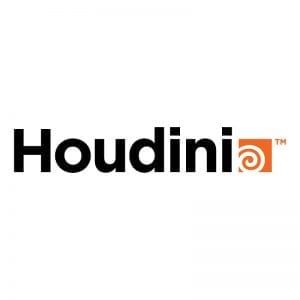Getting Started
When starting my project I was initially unsure as to what I wanted it to focus on, I knew I wanted to create a VFX scene or sequence however had no direction past that. I therefore went about watching some previous students’ work on https://lsfmdigibods.artstation.com and was particularly inspired by one student’s work in Houdini. I have always been interested in particle physics and environment based CGI such as fire and water and so I decided to learn the software in order to create my own pyro and fluid based simulations.
In my research for the capabilities of Houdini and what the software can be used for I came across the Side FX customer reels, targeted at selling the latest versions of Houdini to companies and realised the full extent of the software’s potential (https://vimeo.com/283047555, https://vimeo.com/226906993). The companies shown within these are the big VFX giants that do the CGI for some of the years’ biggest releases including Avengers: Infinity War and Pixar films like Cars and Moana, and are the exact companies I will be applying to following my graduation. Therefore, for my final output, I will create a short portfolio of a series of VFX compositions created in Houdini, as well as some transitions showing the shots at various points in the pipeline to demonstrate my workflow. I have chosen the portfolio project type as the target audience for my project is potential employers at companies such as Framestore and Double Negative for when I am applying for positions next year.
I will achieve this goal by combining my current knowledge of VFX and 3D compositing with online tutorials found both on the SideFX (creators of Houdini) website, and on the online teaching platform Pluralsight. Through these platforms I will supplement my current understanding and learn how to create pyro and fluid sims in the Houdini program. I will then document the research on this blog through the use of text posts and screenshots as well as a number of time lapses and stills of renders that I create during the learning process. Lastly on this blog I will have a look at the industry as it stands today and try and determine why modern cinema and television depend so highly on computer generated effects as opposed to practical ones.
Here is a copy of my formal learning agreement, to be submitted to my tutors at the end of the third week, which outlines my specific aims and objectives for the coming semester.
References
- LSFM Digital Media (2018) LSFM Digital Media Research & Development Tests & Outputs. Artstation. Available from https://lsfmdigibods.artstation.com [accessed 8 October 2018].
- Jak Rhodes-Smith (2018) Houdini Experiments . Available from https://www.youtube.com/watch?v=RalQA3aUwAA [accessed 8 October 2018].
- SideFX Houdini (2018) Houdini Customer Reel 2018 . Available from https://vimeo.com/283047555 [accessed 8 October 2018].
- SideFX Houdini (2017) Houdini Customer Reel 2017. Available from https://vimeo.com/226906993 [accessed 8 October 2018].
- SideFX (2018) Tutorials. Side Effects Software Inc. Available from https://www.sidefx.com/tutorials/ [accessed 8 October 2018].
- Pluralsight (2018) Pluralsight Home. Available from https://app.pluralsight.com [accessed 8 October 2018].

